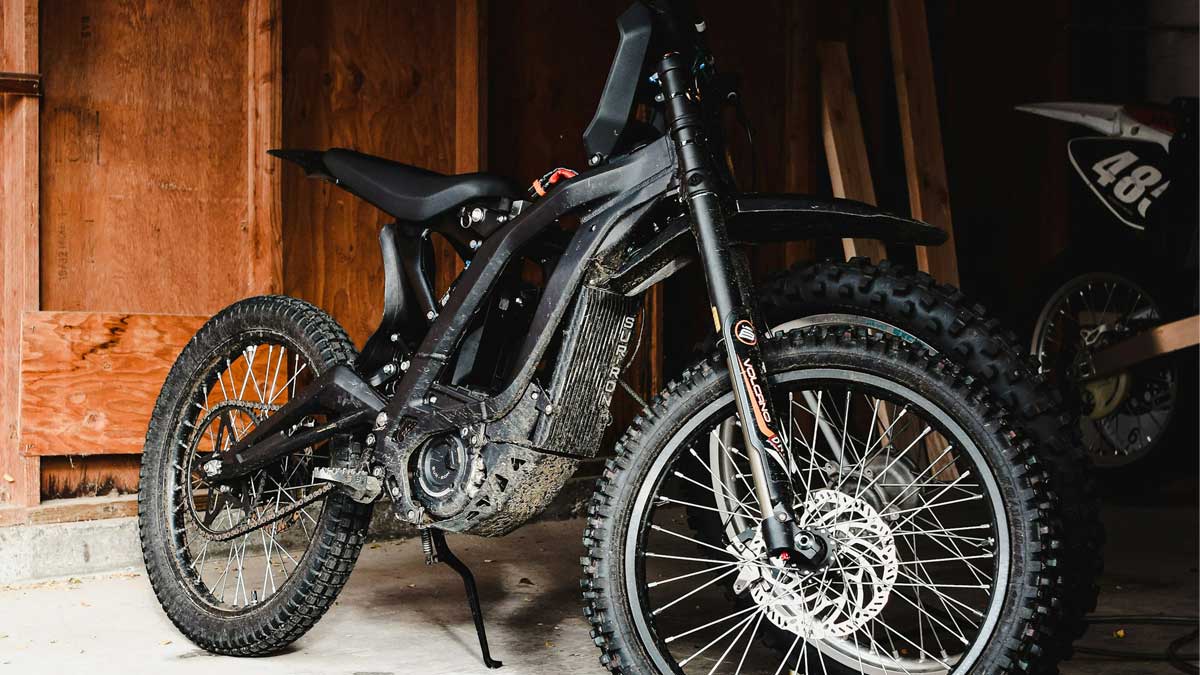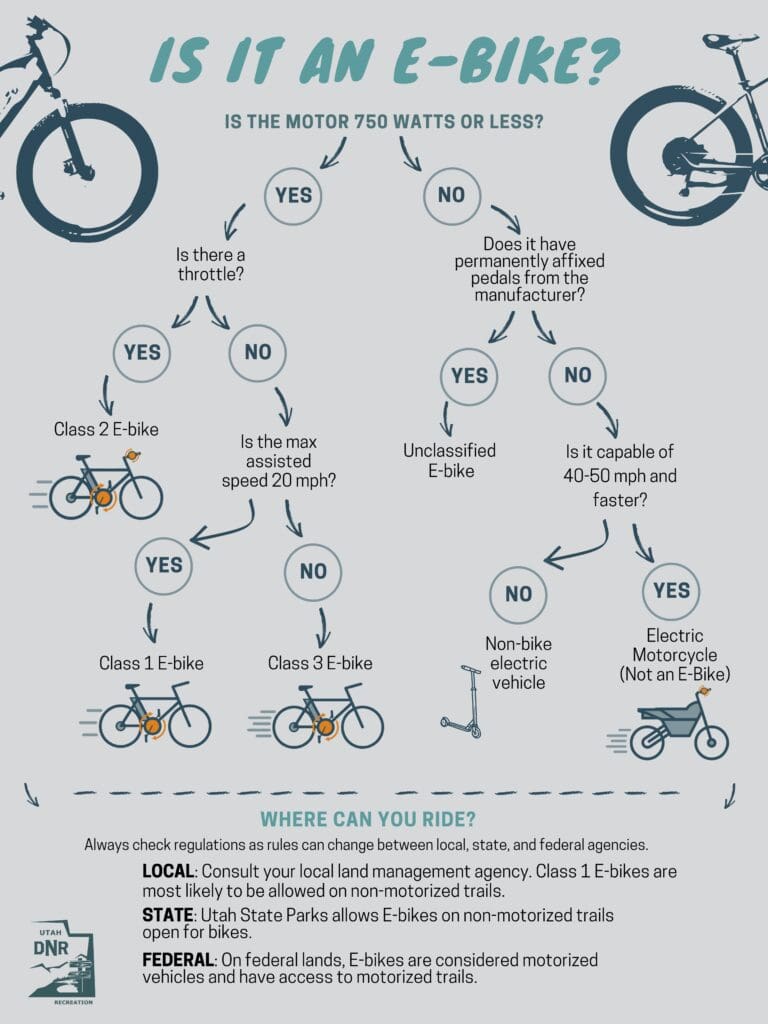Police & Fire
Surron e-motorcycles not street-legal or allowed on Park City pathways; here’s why

Surron electric dirt bike. Photo: Danielle Stein
Certain models of these e-motorcycles can hit speeds up to 75 mph, but according to Lt. Randall, they are not street legal. They are also not allowed on bike paths in town, restricting their use to private property only.
PARK CITY, Utah — It’s no surprise that e-bikes have soared in popularity since their inception. The convenience of getting from one side of town to the other is unbeatable in warmer months, with parents utilizing them as a means for their children to get to activities without a driver’s license. However, posts and comment sections online and in grocery store chatter show a growing concern for the rise in instances where youth and teens on unregulated e-bikes and e-motorcycles are breaching the line of safety and negligence. Now, more than ever, residents are calling for more enforcement out of fear that their lack of judgment made on bike paths and roads could cause unnecessary tragedy.
According to Logan Jones of the Trails and Open Space Department with Park City Municipal, the use of the word “e-bike” should not be used to define every electric bike as more and more models and styles are coming onto the market. Some models allow riders to far surpass pathway speed limits and not adhere to pathway and public road laws. Jones noted that manufacturers will sell bikes as a Class 2 e-bike but provide simple steps to alter the bike aftermarket.
Once people receive the bike, “they can just go on the Bluetooth connection to the electronics of the bike and make it an unregulated e-bike, which will then allow you to throttle up to 35 miles an hour. With a click of a button, you can go from a class one e-bike to unregulated,” Jones said.
TownLift spoke with Lieutenant Jay Randall of the Park City Police Department to discuss the police’s jurisdiction in enforcement and the city’s philosophy in handling matters such as e-bike and e-motorcycle use among minors.
The Park City Police Department prioritizes education over enforcement unless violations are severe. “The philosophy is education first, unless it’s egregious,” Randall explained. “Safety is number one. If that means I offend you because I stopped you to educate you, it’s because I’m trying to protect not only you but everybody else on the street.”
The problem the Police Department is facing now is the increase in Surron e-motorcycles in town. Certain models of these e-motorcycles can hit speeds up to 75 mph, and according to Lt. Randall, they are not street legal. They are also not allowed on bike paths in town, restricting their use to private property only.
“If it doesn’t have pedals, if it has pegs, it’s a motorcycle,” said Lt. Randall.
So what is allowed and what is not allowed on the bike path?
At this moment, the bike paths allow Class 1 and 2 e-bikes.
Class 3 e-bikes, defined by Utah State Code § 41-6a-102 (7-9, 16) as a top speed of electric assist limited to 28 mph, are only permitted on roadways. In fact, if an e-bike assists above 20mph, it isn’t permitted on Park City’s pathways.
E-motorcycles, like the Surron brand, are not allowed on the bike path or any public road.

Most importantly, according to Park City Ordinance 10-1-4.5, e-bike users must ride at safe speeds and yield to all other trail users. Violating this ordinance is now an infraction.
Safe speeds include the new 15 mph limit on the bike paths. The new speed limit signs are currently being installed all over town.
The ages of children on the bikes are also considered for who can and cannot be biking. Law states that no children under the age of 8 can ride an e-bike, and up to the age of 14, they are required to have a parent or guardian with them at all times.
“Class 3 bikes are not allowed on our pathways and are also illegal for under 16 years old to operate, yet kids are all over the trails in this area on class 3, and also unregulated e-bikes,” Jones noted.
However, according to Lt. Randall, people who are not abiding by these laws typically don’t even know they exist.
“We had three operations where our bike team physically went out and looked for these types of violations and stopped people and educated them. And when they’re juveniles, our number one thing is first, educate, and two is call the parents and say ‘hey, let us tell you what we did. We stopped your son or daughter on this… this is the reason why they want to wear a helmet… there are three people on [the bike]… they’re 11 years old—these types of things,” Lt. Randall said. “The feedback we’ve gotten from most has been very supportive.”
While the Police Department is working toward heavier education in schools to address some of the confusing aspects of e-bike laws and classifications, new state and county laws are coming out to help people understand what they are buying.
A new ordinance 41-6a-1115.5, passed in May of this year, states that sellers of electric vehicles with fewer than four wheels (excluding electric-assisted bicycles) must clearly inform buyers that these vehicles are not considered “electric-assisted bicycles” and are subject to motor vehicle laws if used on public roads or lands. This means they might not be covered by people’s insurance.
The challenge for Lt. Randall is helping parents understand that while parents may take all the proper precautions for their children riding e-bikes if something happens, they are still held liable.
“What most parents don’t realize is if their kids riding an e-motorcycle, wheeling down the road at 40 miles an hour and hits a car or hits a person, the parents are paying – it’s not the kid – and their insurance will most likely not cover it because the the child and the motorcycle weren’t insured,” Lt. Randall said.
“Plus, the kid was reckless, which probably wouldn’t be covered by any insurance anyway. So, not only that, they’re going to have to pay for their own medical bills and the medical bills of anybody else that’s involved—and they’re subject to civil lawsuits. It’s not just just the physical aspects, but the financial impacts on families,” he said.
The big question many concerned residents voiced was what it was going to take for action to be taken. Is it a tragic accident that pushes the needle to enforcement? Lt. Randall said that Park City has been lucky to not have an incident yet, but it’s always in the forefront of their thoughts.
“That’s been our biggest fear—that should be everybody’s biggest fear. And I don’t, unfortunately, have a perfect answer because I think it’s something that evolves,” Lt. Randall said. “So you start with the education, and then you go to enforcement. What’s going to happen here is collectively, the city and the police department will have to make a determination of what level of enforcement is necessary and the emphasis is that we start with education.”
For those looking for a full rundown on e-bike laws, usage capabilities on paths around town, and educational videos for children and parents, check out Park City Municipal’s dedicated e-bike page and the Police Department’s e-bike videos on laws and safety.

















